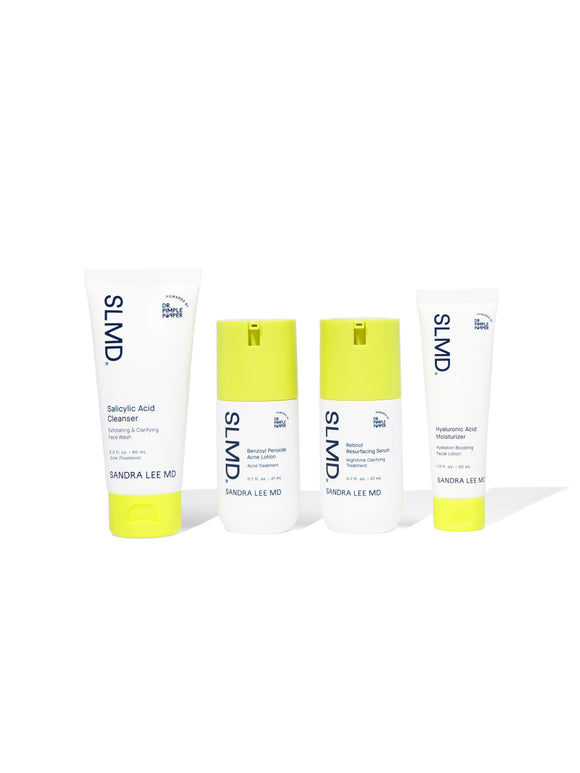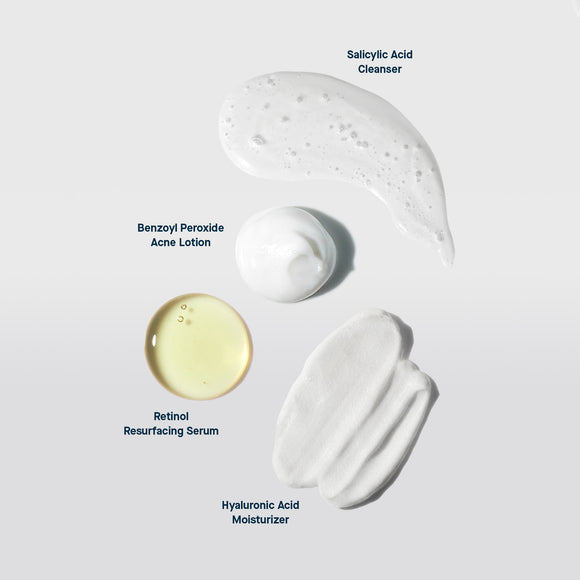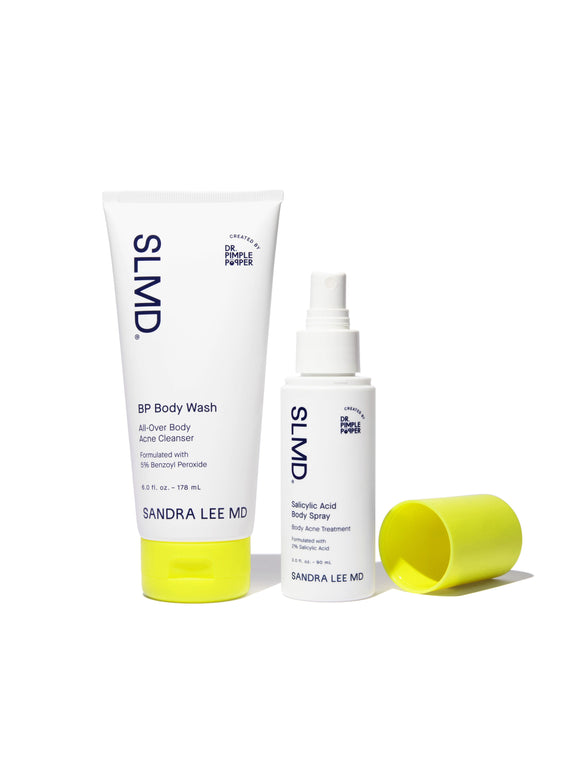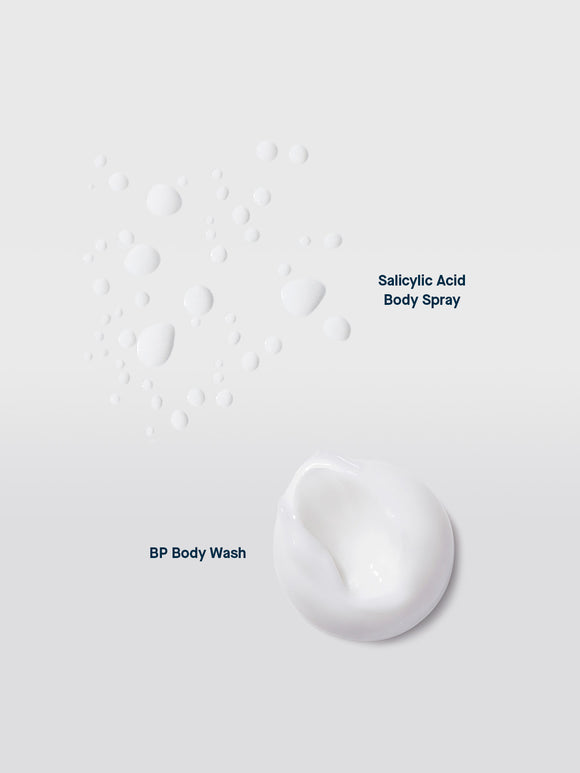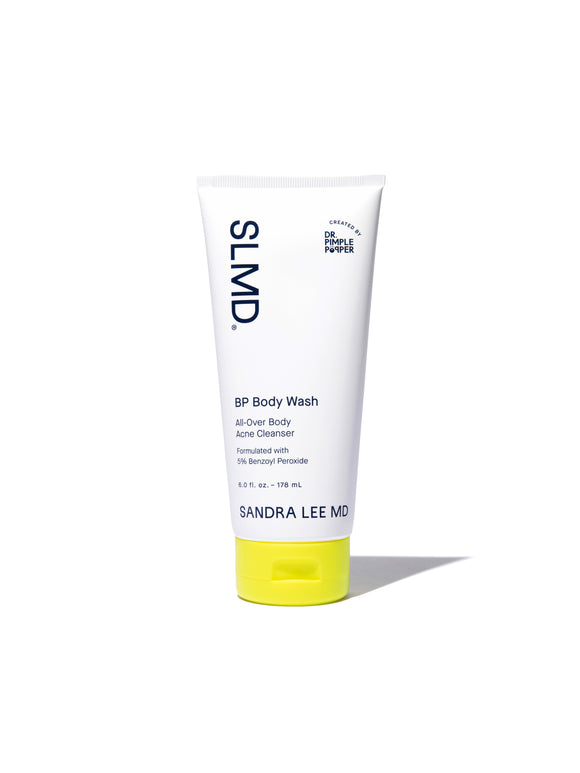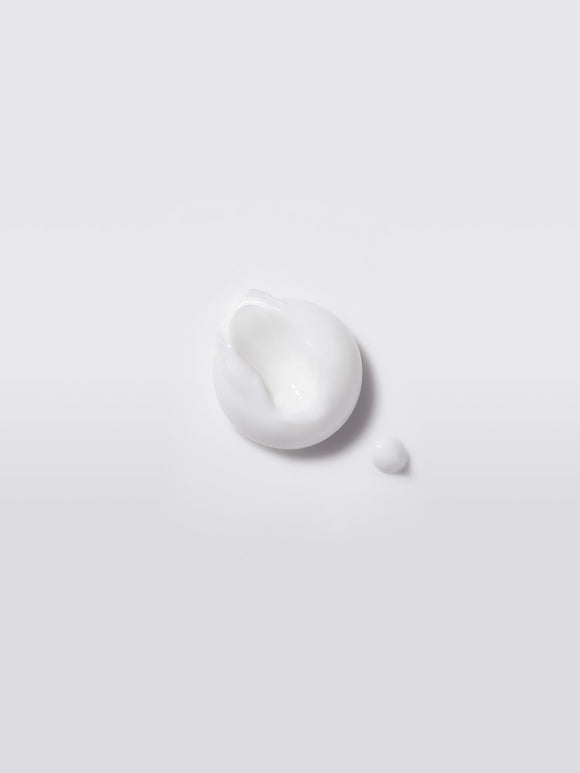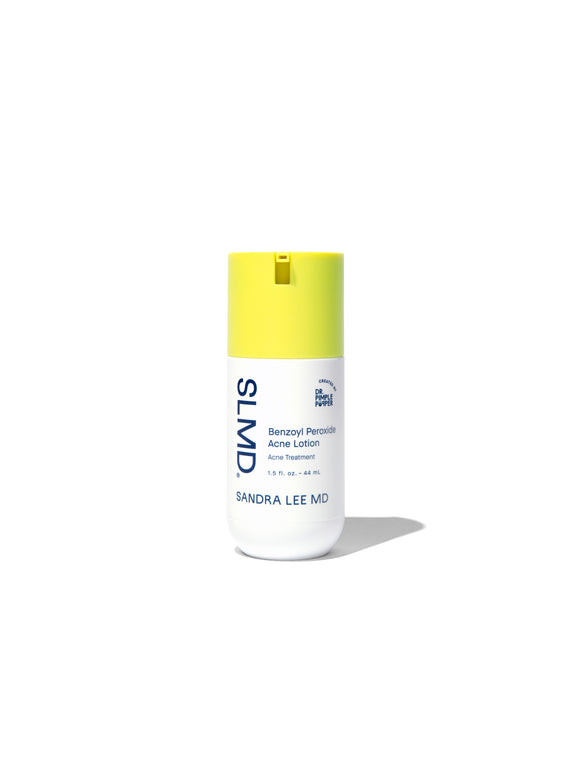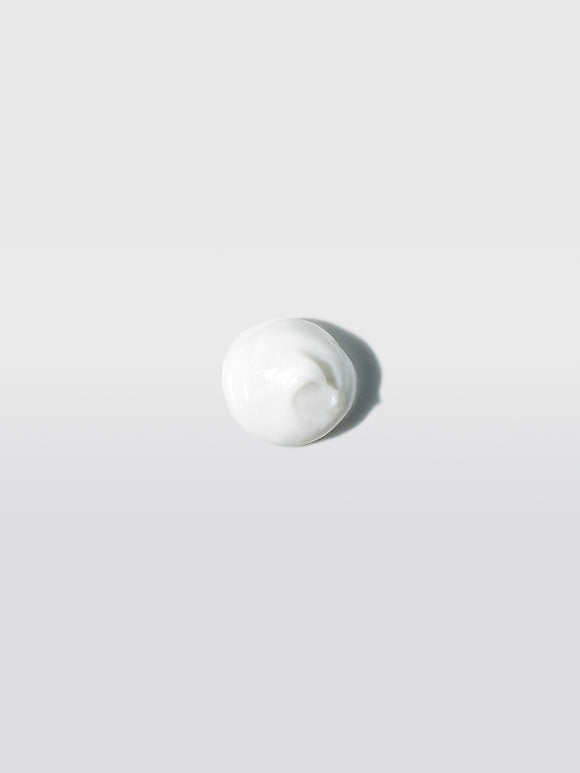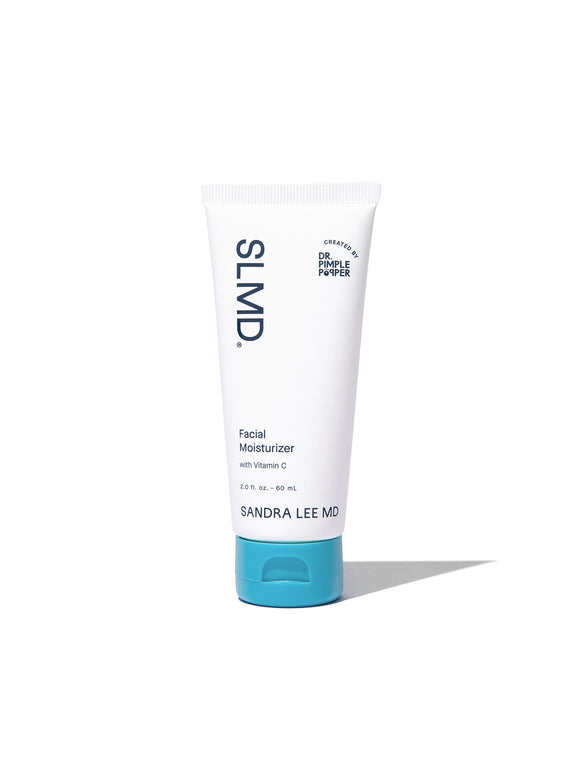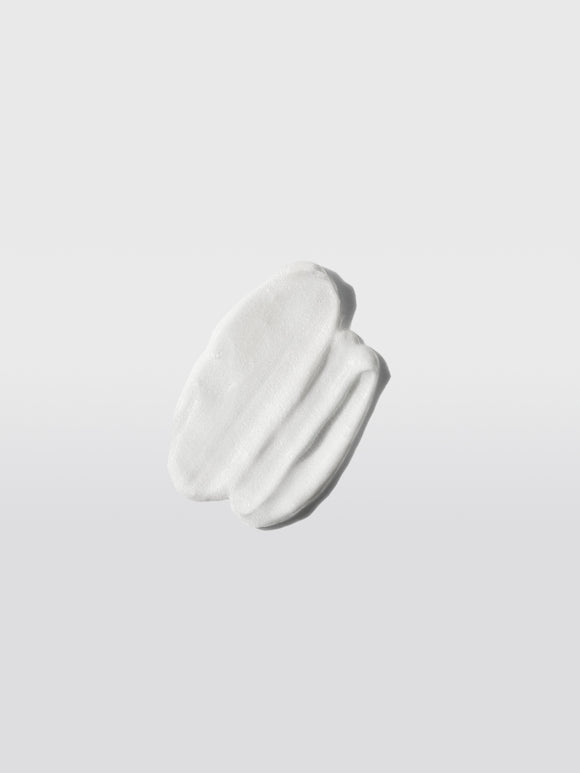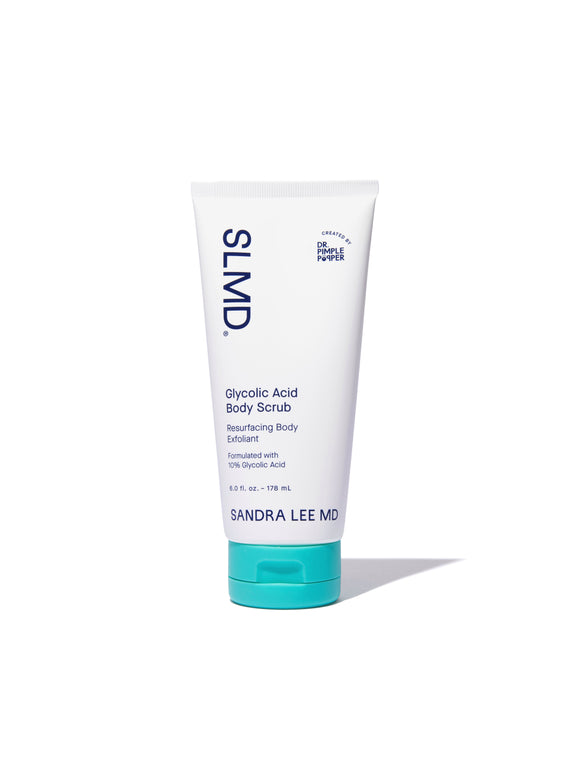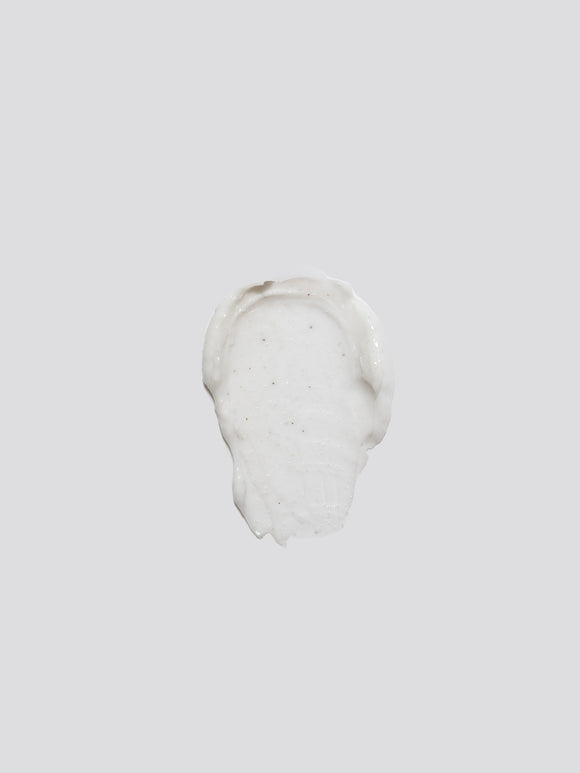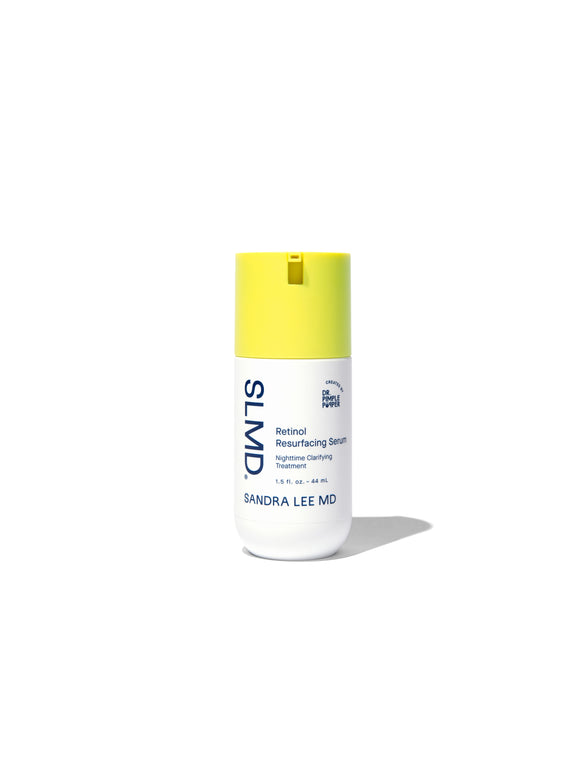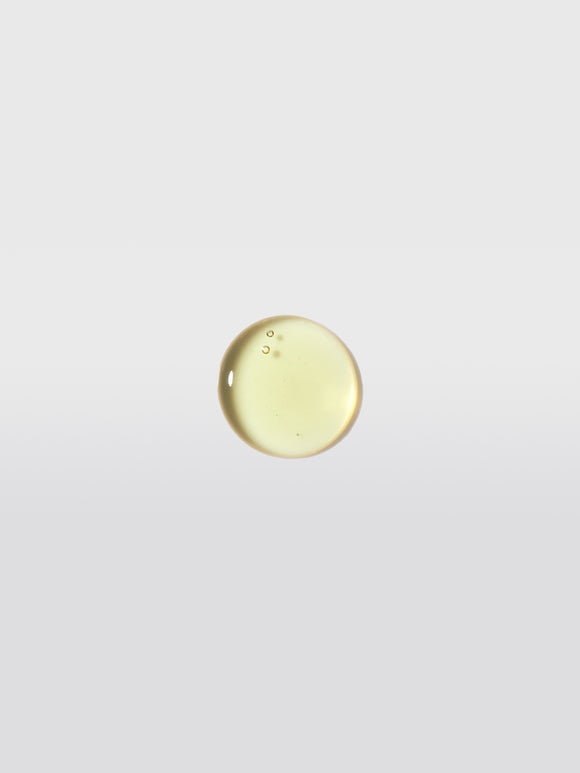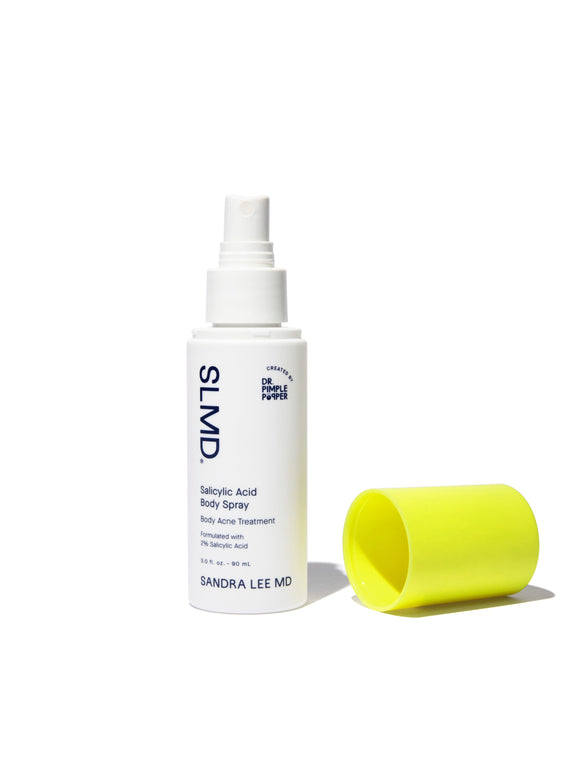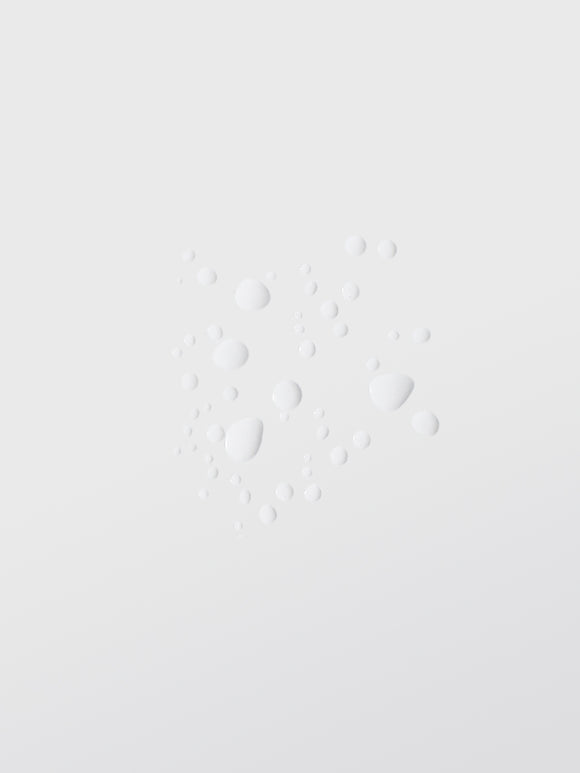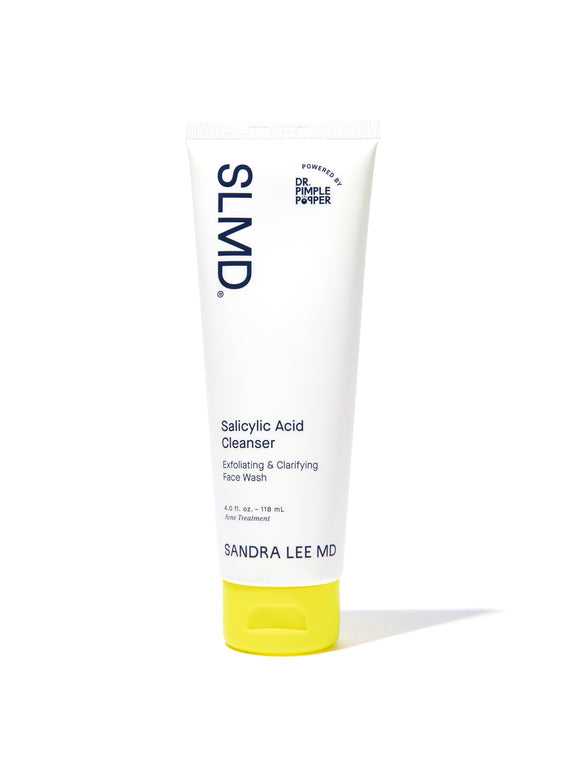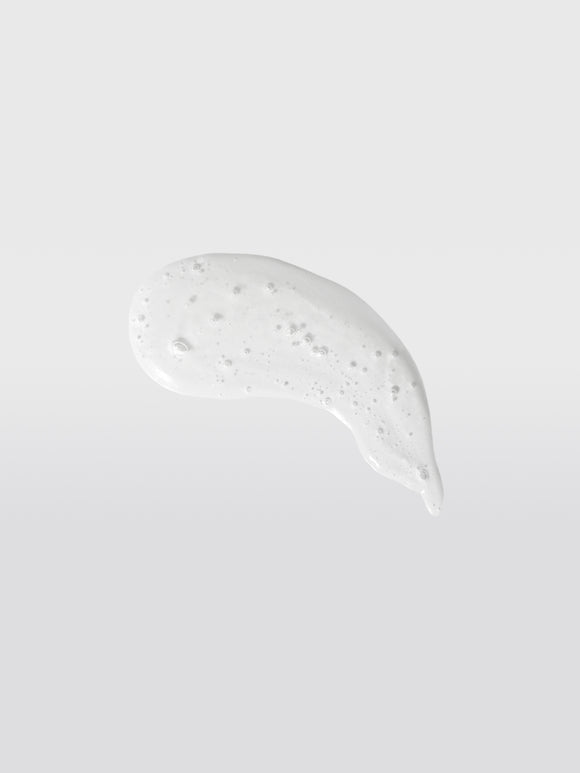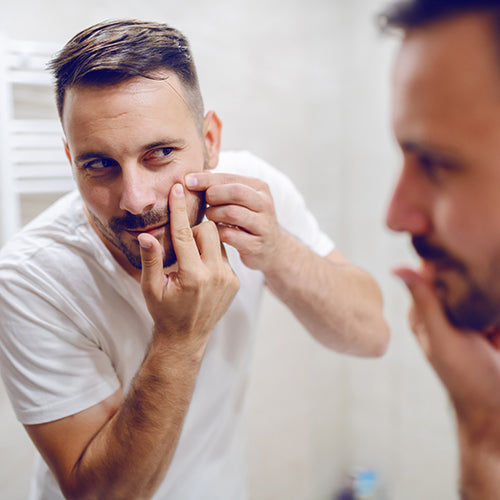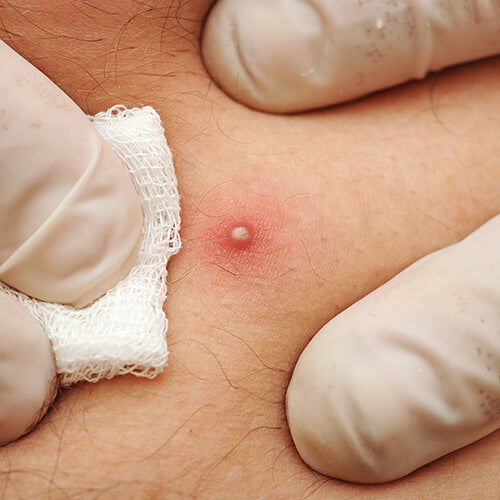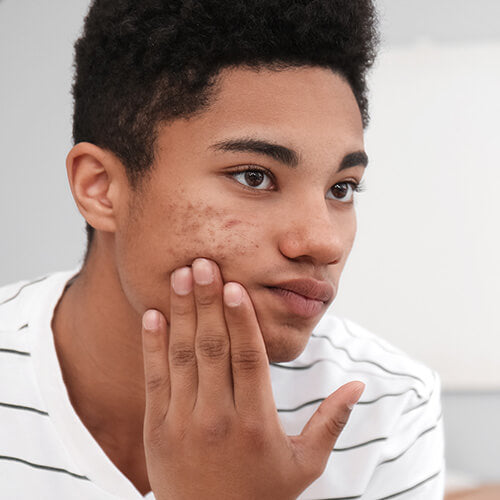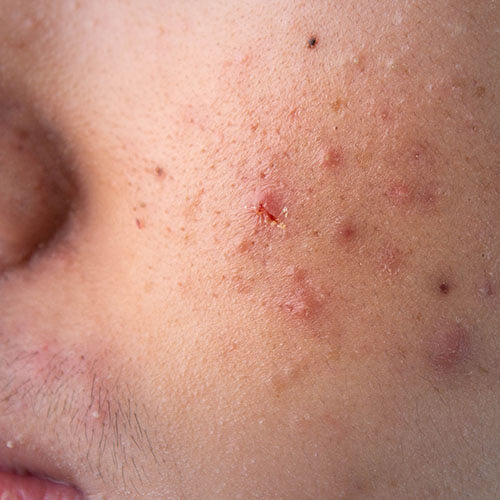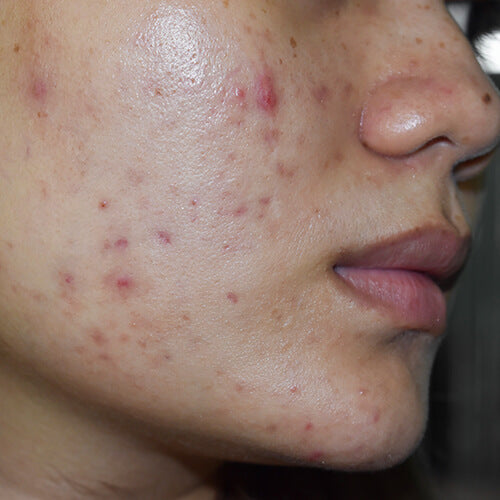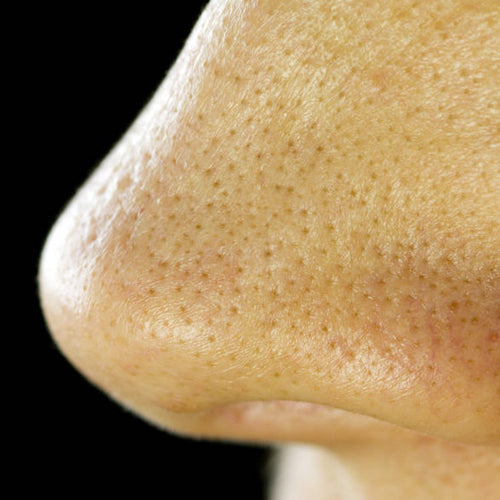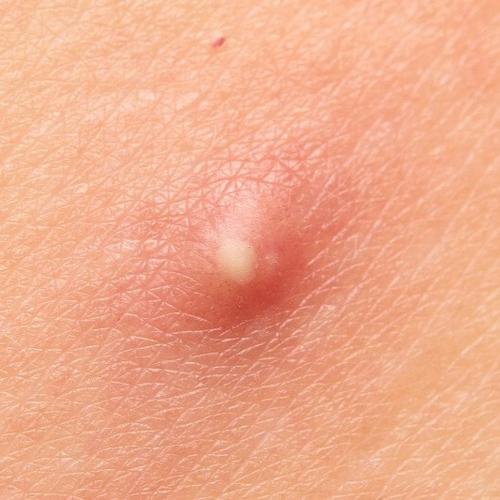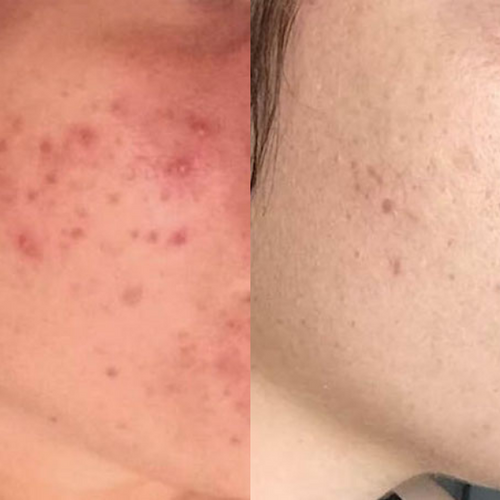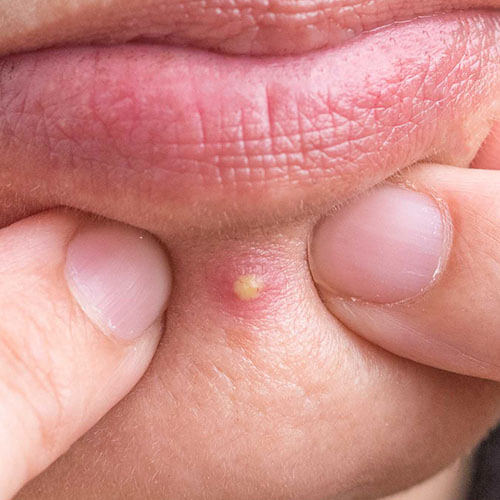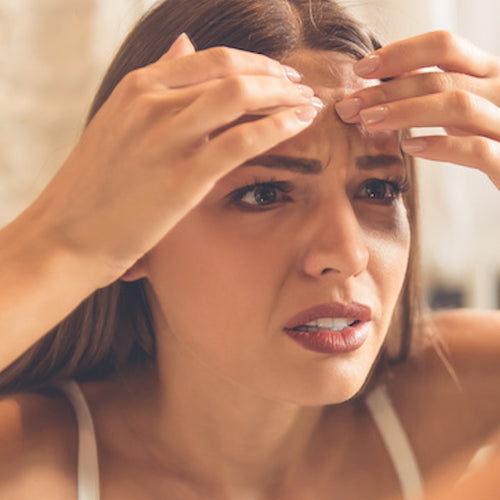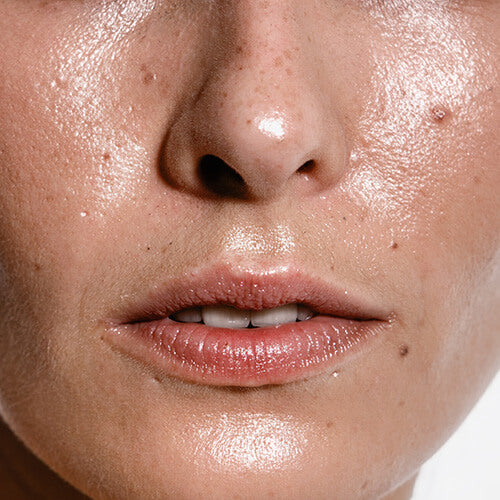
Sebum, Explained
Most of us don’t really think about our skin's sebum production until things go awry: too much (or too little) sebum is one of the key factors in some of the most common skin conditions, including acne, keratosis pilaris, and even visible aging. With the help of Dr. Pimple Popper, we explain everything you need to know about sebum.Published:
8 minute read
Chances are, Find out where sebum comes from isn’t near the top of your to-do list. But given the impact your skin’s oil production has on your overall skin health, it’s worth a little investigating.
Here’s a weird fact: nobody knows exactly why we have sebum. Children produce very little, and their skin functions just fine. While the exact reasons we start to need it aren’t clear, researchers do know a lot of the technical details about sebum and the sebaceous glands that produce it.
Most of us don’t really think about these details until things go awry: too much (or too little) sebum is one of the key factors in some of the most common skin conditions, including acne, keratosis pilaris, and even visible aging. Here, we explain everything you need to know about sebum.
Article Quick Links
Where does sebum come from?
It all starts with the sebaceous gland: mini organs within the skin that not only produce sebum, but are involved in a number of physiological functions (more on that in a minute). Sebaceous glands are technically described as multilobular holocrine glands, which essentially means they look a bit like puffy little clouds.
There are two types, based on their location:
- Adjacent to hair follicles (part of the pilosebaceous unit)
- Surrounding mucous membranes (known as ectopic sebaceous glands or Fordyce spots)
Sebaceous glands that are part of the pilosebaceous unit are far more plentiful. Pilosebaceous units are tiny organ systems within your pores that also contain two additional parts:
- Hair follicle: a tunnel-shaped structure where the hair is “born” in the dermis and extends up through the epidermis
- Arrector pili muscle: hair erector muscles which contract and cause hair to stand on end (aka make goosebumps)
Sebaceous glands are located adjacent to the hair follicle, connected by a duct that opens into the follicle. They’re present throughout the entire body, except the skin on the palms, and the tops and soles of the feet. Researchers estimate that there are about 900 of them per square centimeter of skin on the face, scalp and chest, while other areas — like the lower torso and limbs — have as few as 100 per cm2.

What is sebum made of?
Because sebum secretions are made up of the entire cell and all its contents, they’re known as holocrine glands. Basically, the cells inside the sebaceous gland (known as sebocytes) grow and differentiate inside the organ — and when they’re ready, they burst, releasing everything inside.
Maturing sebocytes produce a variety of substances as they migrate from the perimeter of the sebaceous gland toward the open area in the center (aka the lumen). As the cells differentiate, they convert carbon into lipids, contained in little droplets within the sebocytes. When the cells reach the lumen, their outer membrane breaks down, releasing all of its contents into the duct.
Sebum is primarily a mixture of lipids and waxes, including:
- Glycerides (30–50%)
- Wax esters (26–30%)
- Free fatty acids (15–30%)
- Squalene (12–20%)
- Cholesterol esters (3–6%)
- Cholesterol (1.5–2.5%)
There are also a variety of other substances in sebum, including enzymes (like CoQ10) and nutrients (like vitamin E). Interestingly, the composition of sebum changes slightly throughout life.
What does sebum do?
Once this oily secretion passes into the hair follicle through a tiny duct, it’s wicked to the skin’s surface by the growing hair shaft. Though its exact role is not entirely understood, sebum is believed to perform a variety of functions, including:
- Moisture control: along with epidermal lipids, helps create a watertight barrier that counteracts humidity, prevents transepidermal water loss (TEWL) and keeps skin and hair supple.
- Photoprotection: reactive substances like squalene help neutralize the damaging effects of UV radiation.
- Thermoregulation: lipids help control the evaporation of water which regulates body temperature
- Antimicrobial activity: chemicals like sapienic and oleic acids, along with its acidic pH, make sebum inhospitable to pathogens.
- Antioxidant delivery: sebum transports nutrients like vitamin E to the skin’s surface to inhibit free radical damage.
- Pro- and anti-inflammatory function: research shows that sebocytes stimulate skin’s innate immune system.
What factors affect sebum production?
The activity of our sebaceous glands is largely governed by hormones (more on that below). However, a variety of other factors play a role, including:
- Diet: data indicates that a high-glycemic diet increases sebum, while calorie restriction reduces levels.
- BMI: metabolic syndrome associated with obesity leads to high levels of insulin, which in turn increases sebum.
- Medication: certain drugs, including the acne medication isotretinoin and oral contraceptives, curb sebaceous gland activity.
- UV exposure: studies associate exposure to ultraviolet radiation with increased sebum secretion.
How do hormones affect sebum levels?
Sebaceous glands are pretty unique in the gland world, because they are both hormone sensitive (full of androgen receptors, or ARs) — and they also play a pivotal role in hormone metabolism. We’re talking here about androgen hormones, including:
- Testosterone: typically thought of as the “male” hormone, produced in the male testes and the female ovaries, as well as in the adrenal glands of both sexes.
- Dihydrotestosterone (DHT): a more potent form of testosterone that’s created by metabolizing (converting) testosterone, present in both males and females.
- Dehydroepiandrosterone (DHEA): a prohormone, can be converted to testosterone and DHT within sebocytes.
- Androstenedione: another prohormone that can be converted to testosterone and DHT within sebocytes.
In other words, androgen hormone levels produced by the body directly impact our sebum levels — but our sebaceous glands can also help produce these hormones.
How do sebum levels change over time?
The size of our sebaceous glands, as well as the amount and composition of the sebum they produce, fluctuate dramatically throughout our lifetimes. The highlights:
- In utero: in the third trimester, sebaceous gland secretions help form the vernix caseosa, the thick white coating that protects delicate fetal skin.
- Birth to 6 months: due to the influence of the mother’s hormones while in utero, sebum levels of an infant rival those of an adult.
- 6 months to age 9: sebum levels drop dramatically and stay low throughout childhood.
- Pre-puberty to late adolescence: sebum levels steadily rise by as much as 500%, corresponding to increased androgen production.
- Early adulthood through old age: sebum levels diminish gradually as we get older, as androgen levels fall.
What role does sebum play in skin conditions?
Though the research is far from definitive, we know that sebum is intricately linked to a variety of skin conditions and disorders. Here, we break down some of the most common — and what skincare works best to manage them.
Acne vulgaris
Although the driving mechanisms aren’t well understood, the most recent research points strongly to a link between the development of acne and several key changes to sebum:
- Increased sebum levels (aka seborrhoea): levels of production correspond to severity of acne. It’s believed that elevated sebum levels increase the likelihood of clogs forming at the opening of the sebaceous ducts. Sebum also attracts C. acnes bacteria, the anaerobic species linked to acne inflammation.
- Changes in sebum composition: fluctuations in the amount and makeup of certain chemicals (including squalene, vitamin E, and linoleic acid) in sebum are associated with inflammation and decreased barrier function, which may leave skin more susceptible to acne.
To help control oily and acne-prone skin, it’s important to use non comedogenic products that reduce oil buildup without over drying. Some favorites of Dr. Sandra Lee (aka Dr. Pimple Popper) from her SLMD Skincare line include:
Seborrheic dermatitis
Characterized by waxy, scaly buildup primarily on the scalp, this condition has been linked to a yeast called Malassezia that’s commonly present on the surface of the skin. Research indicates that these microbes excrete substances that alter the lipid composition of sebum, which may be what triggers the inflammatory response that causes the buildup. The condition is generally treated with anti-inflammatory and antifungal shampoos.
Atopic dermatitis (aka eczema)
Dry, itchy, red (and sometimes blistered) patches of skin are the hallmark of eczema. Though its causes remain unknown, atopic dermatitis is believed to have a strong genetic component. Studies show that altered sebum composition and a compromised skin barrier are prominent indicators. Dr. Lee recommends colloidal oatmeal, an FDA-approved skin protectant that improves barrier function.
Keratosis Pilaris
KP is also called “chicken skin,” because of its rough, bumpy patches of skin. These bumps are formed by the buildup of excess keratin protein that plugs up the hair follicle, possibly due in part to a genetic mutation. Recent research points to the atrophy (shrinking) of sebaceous glands in early keratosis pilaris lesions, and a noticeable absence of the glands altogether in more advanced cases of KP. This might cause irregularities in the skin cells that line the hair follicles, though more research is needed.
According to Dr. Lee, most cases of keratosis pilaris are well-managed by a combination of exfoliating and moisturizing. SLMD Body Smoothing System includes a scrub and a moisturizer formulated with glycolic acid to smooth and shea butter to soften.
Sebaceous hyperplasia
Sometimes with age, sebaceous glands can become enlarged and noticeable. These small lesions, technically benign hair follicle tumors, are generally harmless. Individual lesions can be removed by electrocautery or lasers, while more severe cases may be addressed with oral isotretinoin or androgen inhibitors.
Sometimes, sebaceous hyperplasia is misdiagnosed as basal cell carcinoma, which can be ruled out with a biopsy.
Dr. Lee’s last word
Sebum production has a direct effect on the way our skin behaves. If you’ve got oily skin, you are more likely to experience acne. But if you have drier skin (like me), you’re more susceptible to things like eczema or signs of aging, because the skin isn’t as well moisturized. My advice is to drink plenty of water, live a healthy lifestyle, and find products that encourage your skin to stay well-balanced.
—Dr. Sandra Lee



